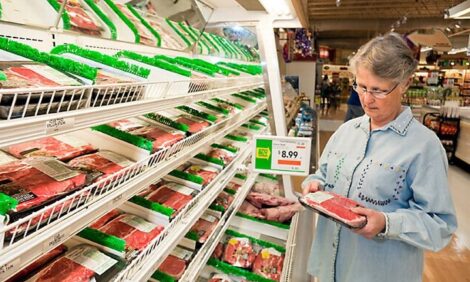



Practical Tips to Help Livestock Farmers Turn over New Leaf in 2015
UK - It’s that time of year when everyone starts thinking about making New Year’s resolutions and turning over a new leaf.To help farmers thinking about changing the way they manage their grassland in 2015, Barenbrug – one of the UK’s leading agricultural grass and forage specialists – has come up with five simple steps designed to help improve fields, pastures and paddocks.
James Ingles, Head of Agriculture at Barenbrug UK, said: “Our work with farmers throughout 2014 has highlighted a growing recognition that grass needs to be managed just like any other crop. We’ve devised these hints and tips to support farmers who have come to this conclusion and decided to get a grip on their grassland during the year ahead.
“Although there is talk of poorer milk prices in the months ahead, livestock farmers shouldn't let that determine whether or not they reseed. New swards out-perform older grasses and should be much easier to manage if enough thought goes into the mixture – helping to improve profitability.”
Step 1: Walk your fields: Look carefully at any areas of grassland. If grass is an unhealthy shade of yellowy green or if there is water lying on the surface after rainfall, there could be a soil structure problem. Left untackled this could affect production and persistency levels later in the year causing the sward to fill up with weed grasses. This in turn will decrease yields and affect spring growth significantly. Check for areas of bare ground where grass is thin or where weeds have already taken over – especially common in feeding areas and around gateways. Look also for high and low areas where bare patches might occur, and damage caused by pests such as rabbits and moles.
Step 2: Look below the surface: If you think there is a problem, examine soil structure. Basic nutrient tests are inexpensive and will help you understand the levels of essential elements present. Digging a hole to examine the top few inches, which are so important to the grass lifecycle, is also advisable – and doesn’t cost anything. If there are signs of compaction, use either a sward lifter or aerator to alleviate the problem. The choice of tool will depend on the depth of compaction. Shallow compaction, up to 20cms, can be corrected by slitting the field with an aerator. Deeper compaction is best treated using a sward lifter, which will lift and shatter the soil, allowing deeper root penetration and a healthier soil.
Step 3: Deal with weeds: Tackle weed grasses immediately. They are usually shallow rooted and pull out very easily. If they make up more than 40% of the sward, harrow hard to remove them. With a sward of more than 70% weed grasses, the best option is to reseed.
Step 4: Prepare the ground: If overseeding is necessary, pick a mixture designed specifically for renovation. Before seeding, harrow or rake vigorously with a spring tine or chain harrows. This can be carried out by machine or, for very small areas, by hand. The aim is to remove all dead material including shallow rooted grass and weeds in the base of the sward. Opening up the sward lets in air and light, allowing clean, fresh growth to come from the base of the plant. It also levels any molehills and highlights vulnerable parts of the field.
Step 5: Overseeding: After harrowing, use a grass mixture designed specifically for the job in hand. The best time to reseed is when the ground is moist and warm, and soil temperatures are above 8°C. The ideal window in the UK is typically between April and September when conditions allow grass seeds to germinate and grow without competing against weeds. Rolling the ground after sowing helps seed-soil contact to promote germination. Reseeding in these conditions allows the plant to develop a good root structure that is ready to spread and grow the following spring, so quickly increasing grass cover.
Once any soil structure problems have been addressed and reseeding has taken place, there is a good chance of growing a healthy grass crop.
Remember that all grass will benefit from feeding with fertilisers but take care not to apply during or shortly after sowing.
New plants have no roots and are unable to take up nutrients so the existing sward would be favoured, creating more competition for the new plants.
TheCattleSite News Desk


